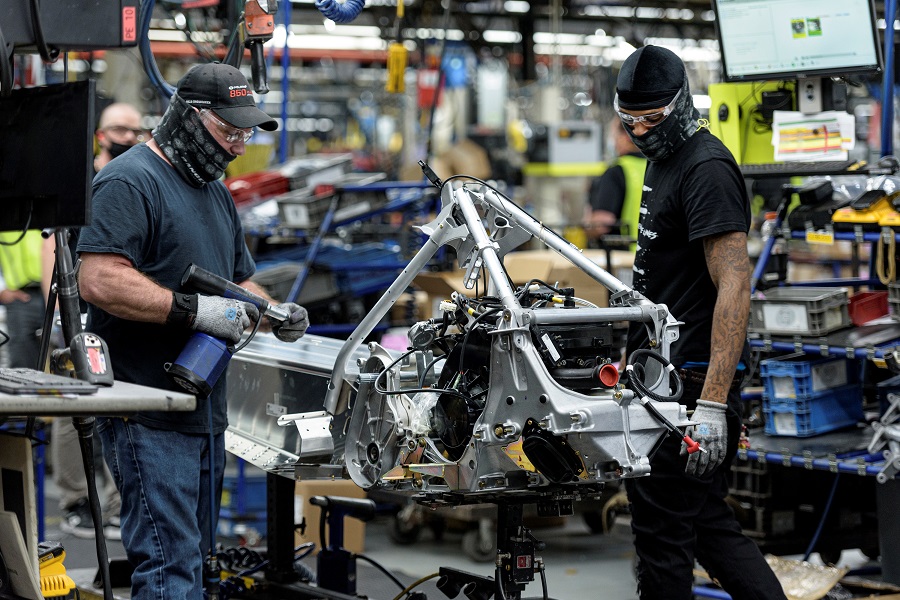Wage growth as a brake on Fed rate-cut aspirations
Wage developments should probably be putting more of a brake on Fed rate-cut aspirations than they seem to be doing at the moment.

>> FED is still minded to ease
Policymakers and the market are obsessively focused on US CPI data. To see this, just consider the speech of Fed Governor Waller. He concluded that he “looks forward to the day when I don’t have to go out two or three decimal places in the monthly inflation data to find the good news”. We can’t remember the likes of Yellen, Bernanke or Greenspan, former Fed leaders talking about inflation to two or three decimal places. But in spite of this obsessive focus on the CPI there’s lots wrong with the calculation, such as the ’phony’ owners’ equivalent rent component, which is one factor holding inflation up, but is a price nobody pays.
The Fed’s decision to target PCE prices rather than the CPI may help in this regard – as does the fact that PCE inflation is currently running some seven tenths below the annual CPI rate. The difference may be partly because the CPI uses fixed weights for consumers’ expenditure patterns, which are adjusted annually, while the weights in the PCE change every month with expenditure patterns. But while using flexible weights might help give a ‘low’, and more accurate, price reading, a similar procedure for wages suggests that wage growth is much higher than the market generally perceives.
If consumers substitute expensive items for cheaper alternatives, there is no reason to assume they won’t swap low-paying jobs for higher-paying professions. Of course, this may be harder to do, although it may not be quite so hard at a time when the labour market is tight and firms are crying out for workers. When it comes to wages, the most closely-watched measure is the hourly earnings data in the monthly payroll report. But that’s probably because it is the first hard data on wages in the monthly calendar.
The quarterly employment cost index (ECI) is a much better measure because wages make up around 70% of labour costs and the ECI includes non-wage costs such as life and health insurance. Hence, the ECI gives a broader idea of total labour costs for firms. But rather like the CPI it is based on fixed weights.
In other words, it does not take account of moves in the labour force as workers, for example, shift from low-paying occupations to higher-paid professions. But there is another measure, the Employer Costs for Employee Compensation (ECEC) that does take account of these shifts. And the fact that it was rising at a huge 6.9% in Q4, against 4.2% for the more commonly-watched ECI, suggests that, just like the CPI and PCE, the variable-weight measure might be a bit more indicative of the ‘true’ situation. But while the CPI/PCE discrepancy goes in favour of lower policy rates, the ECI/ECEC difference would seem to go the other way.
>> What if the FED won’t be able to cut rates?
However, there are pushbacks to this idea. One is that, even if labour costs to employers are higher than the ECI would suggest, inflation is still coming down with PCE prices not a huge distance above the 2% target at 2.7% right now, perhaps suggesting firms are absorbing the wage costs quite well. Another pushback is that if workers shift from relatively low-paying jobs to higher-paying jobs they are more likely to be jobs that generate higher productivity. This thought chimes with a survey from accountancy firm PwC which suggested that productivity in AI-related sectors is as much as five times higher than sectors relatively untouched by AI advancement when looked at across some 15 advanced countries.
This discrepancy is particularly acute in the US and hence if workers are being attracted to these sectors, lured by higher wages, the benefit to the economy could be a higher rate of productivity (which is exactly what we are seeing in the US), meaning that a high ECEC does not necessarily translate into high unit labour costs.
Could this let the US off the hook? It might, although right now, the tightness of the labour market rather suggests that even lower-productivity, AI insensitive sectors are seeing similar wage growth to the sexier highly productive/high AI intensive sectors of the economy. So, in short, wage developments should probably be putting more of a brake on Fed rate-cut aspirations than they seem to be doing at the moment.








